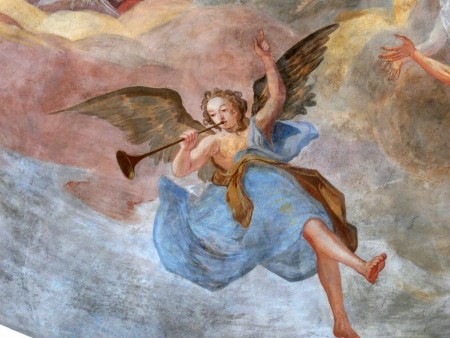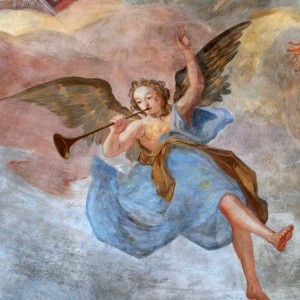There’s a reason for this, though: Advent is divided in half, almost into two “mini-seasons.” These two halves of Advent focus upon Christ’s First and Second Coming, but in reverse order.
 |
| Johann Georg Unruhe, Tuba Angel (1780) |
The first half of Advent focus on the Second Coming of Christ. This is reflected in virtually everything the Church does liturgically. For example, the Readings at Mass and in the Office of Readings focus upon the end times, the Last Judgment, and the return of Christ. For example, the Sunday Gospels this year are from Matthew 24:37-44 and Matthew 3:1-12.
Starting around the Third Week of Advent, we transition from preparing for Christ’s Second Coming to preparing for His First Coming, Christmas. We begin the cycle of readings about John the Baptist, the prophesies of the birth of Christ from Isaiah, and the other Scriptural readings that we commonly associate with Advent and Christmastime.
This unifying theme is reflected in the Church’s Liturgy of the Hours. For the first part of Advent, the Antiphon for the Invitatory is “Come, let us worship the Lord, the King who is to come.” After that, it switches to, “The Lord is close at hand; come let us worship him.” Finally, on the last day of Advent, Christmas Eve, we pray, “Today you will know the Lord is coming, and in the morning you will see his glory.”

Joe, I attend a church that has the Extraordinary Form and the readings are different? Just wondering if any differences in the ‘older’ readings share the mini advent you speak of here.
Teomatteo,
Yes, although that’s not immediately clear because (on both calendars), there are so many Saints’ days celebrated on the weekdays. The Gospels for the First Sunday of Advent is Luke 21:25-33, about the Second Coming. By the Third Sunday, we’re preparing for the Incarnation: the reading is John 1:19-28.
I.X.,
Joe
Same here, I attend the TLM and live in the old calendar so I’m not always able to focus..